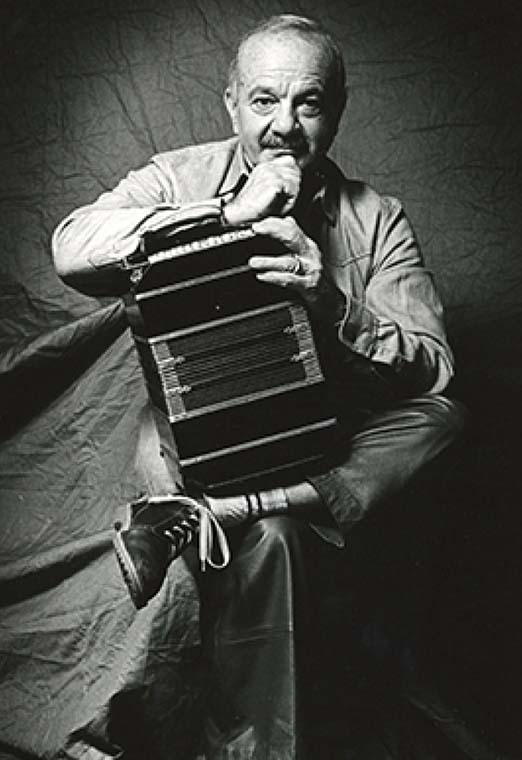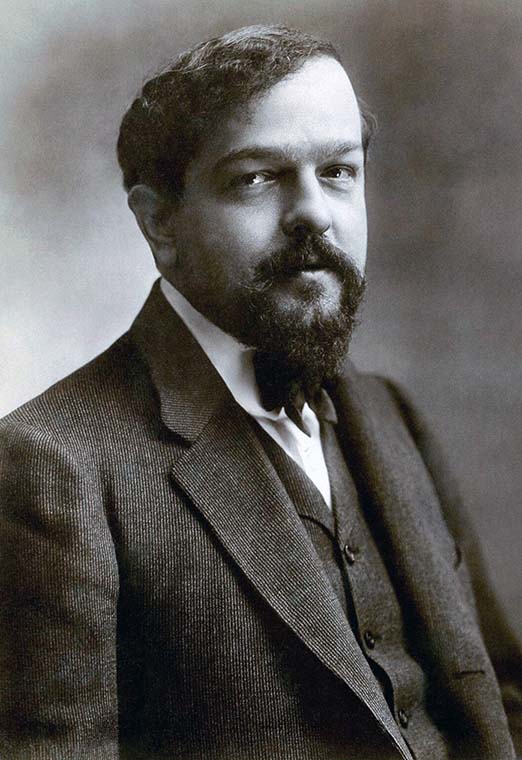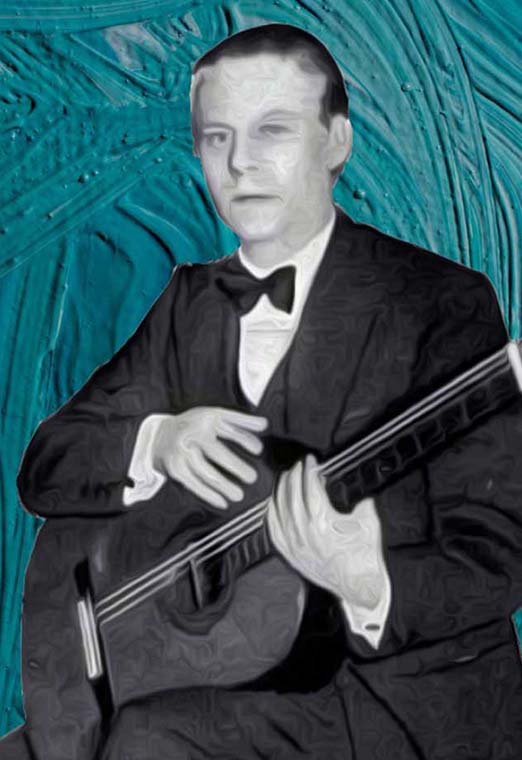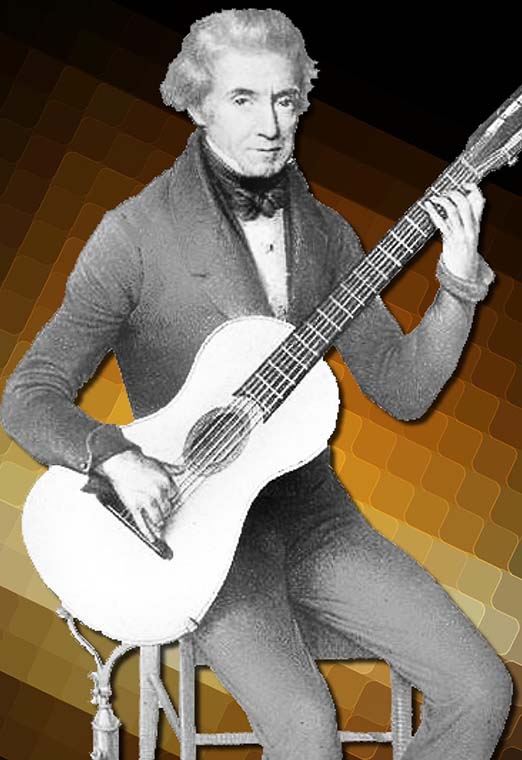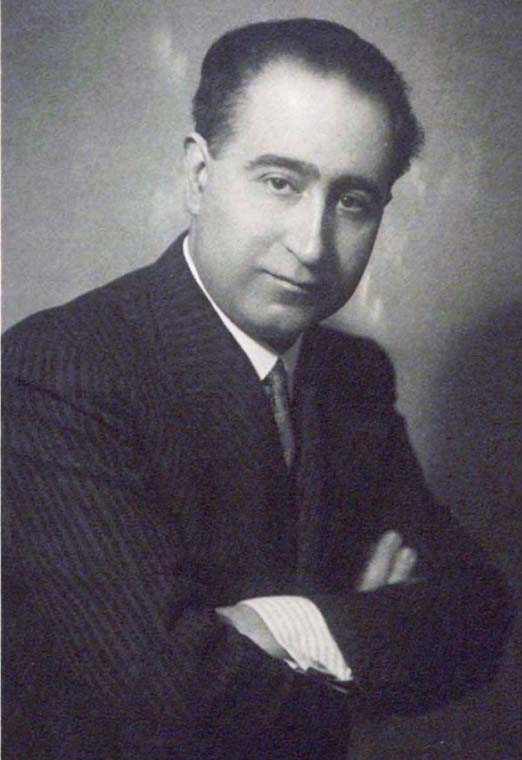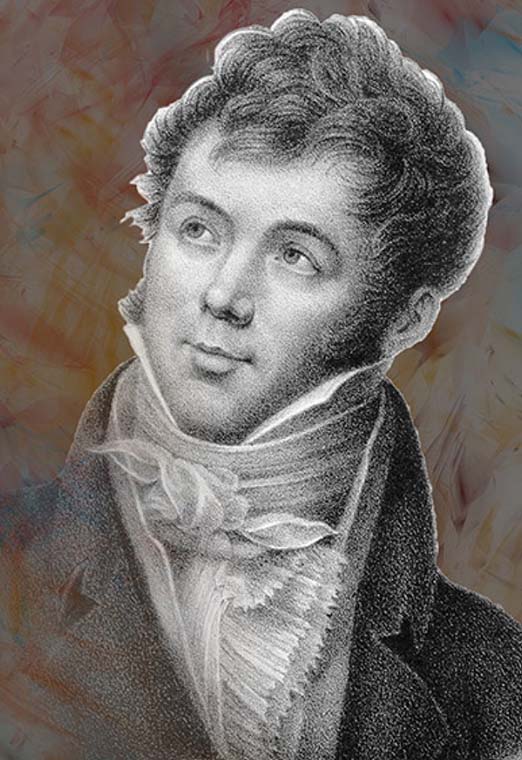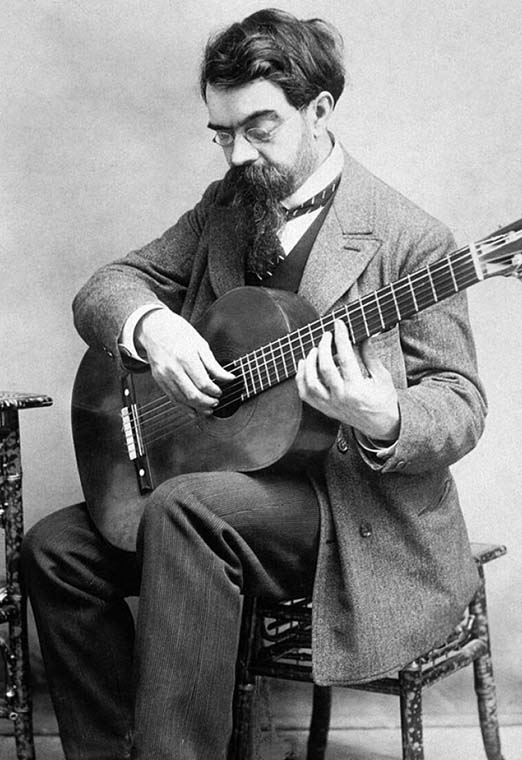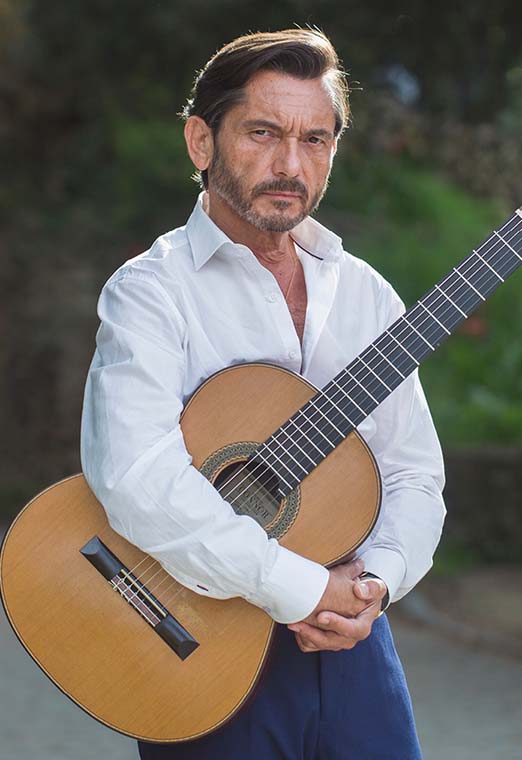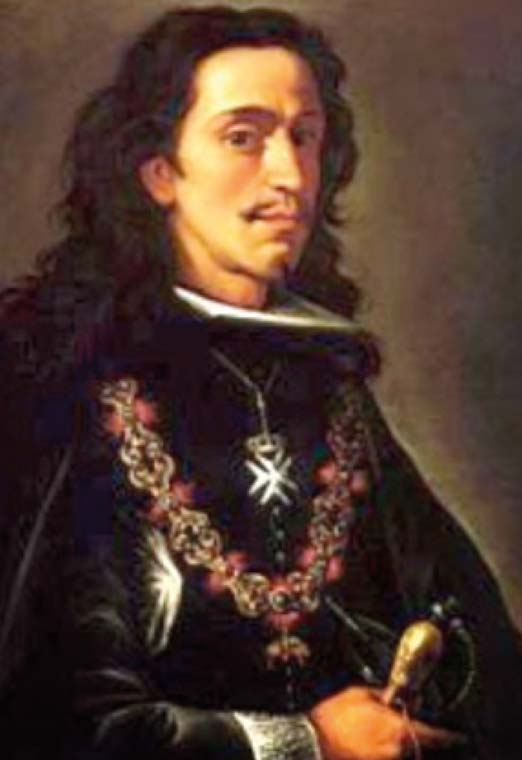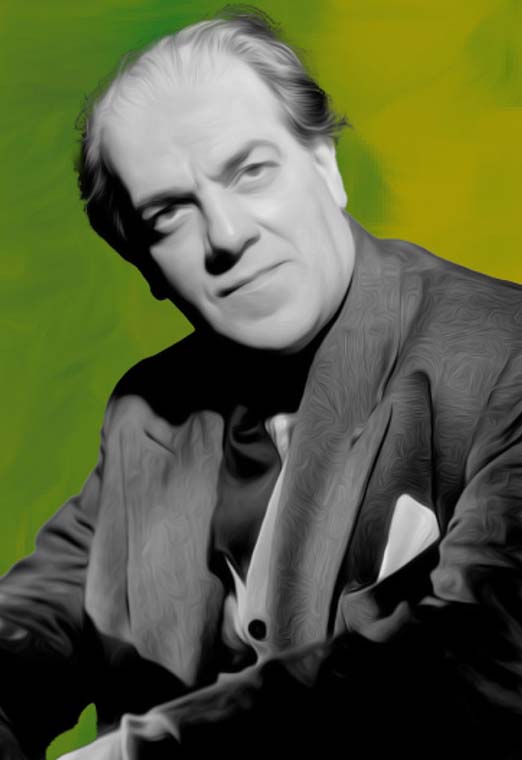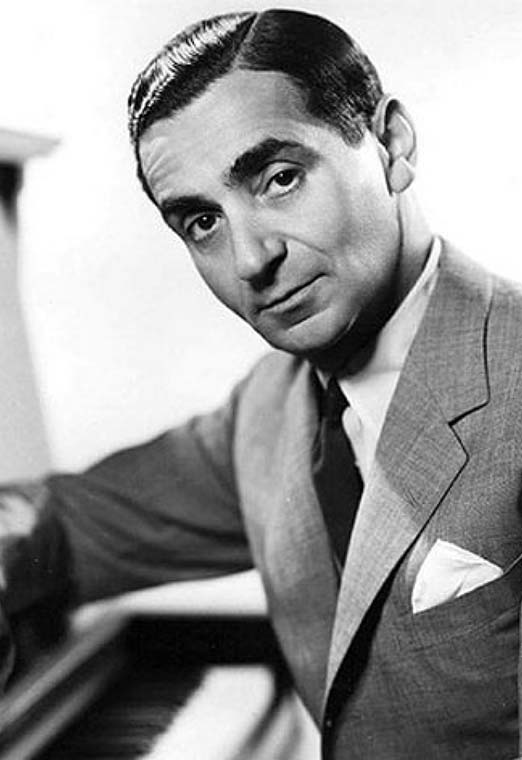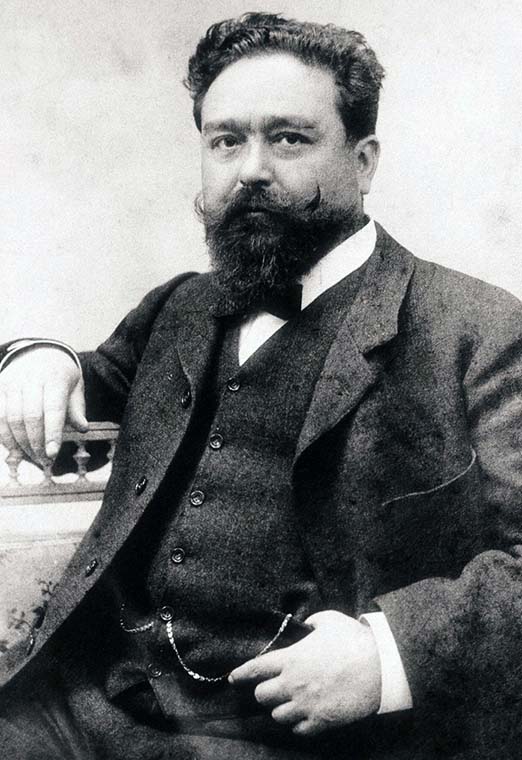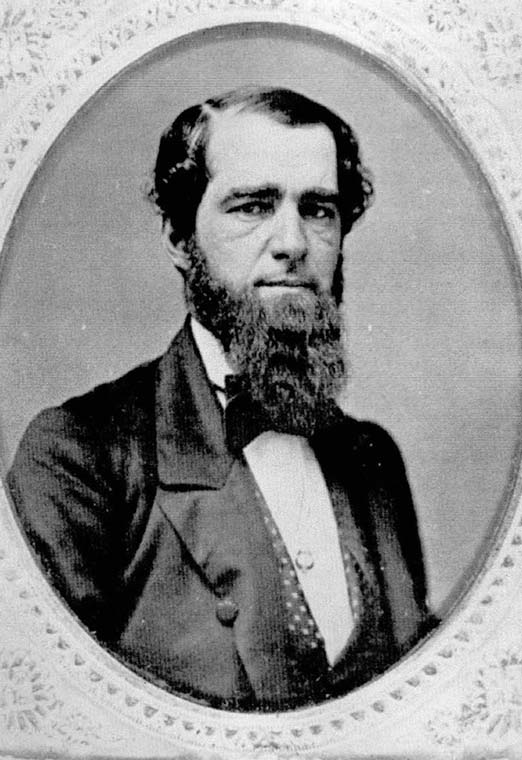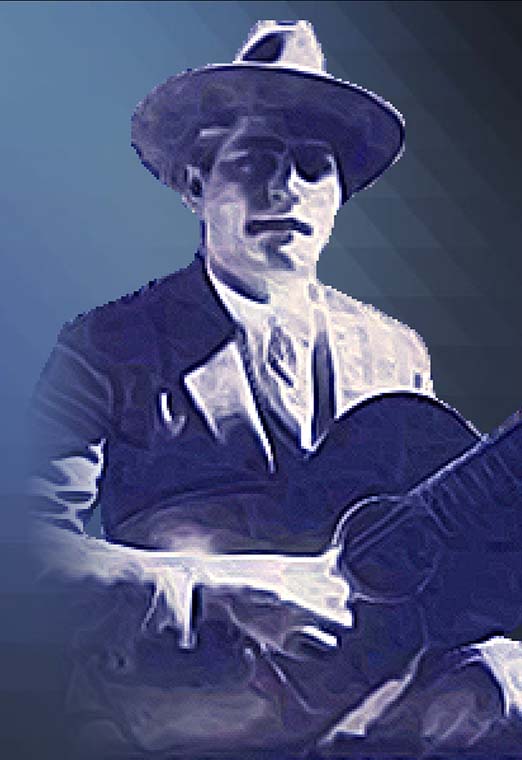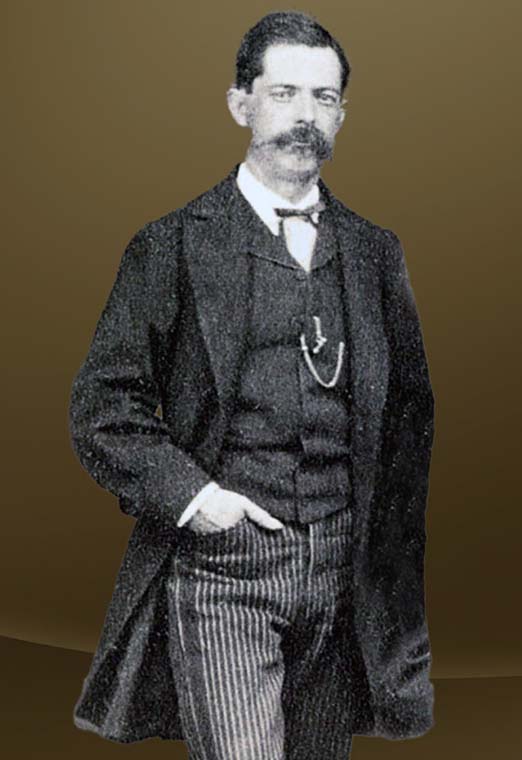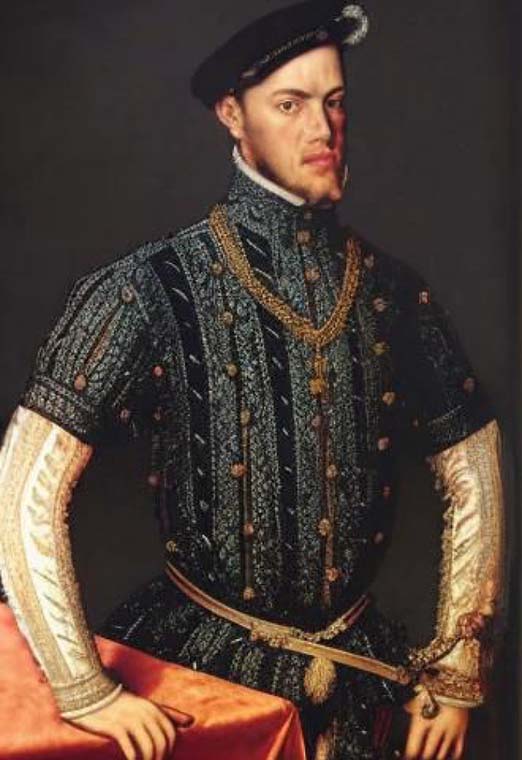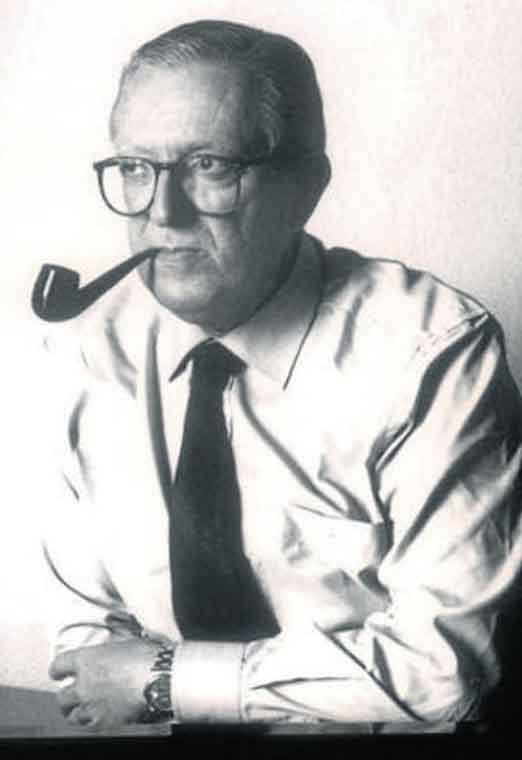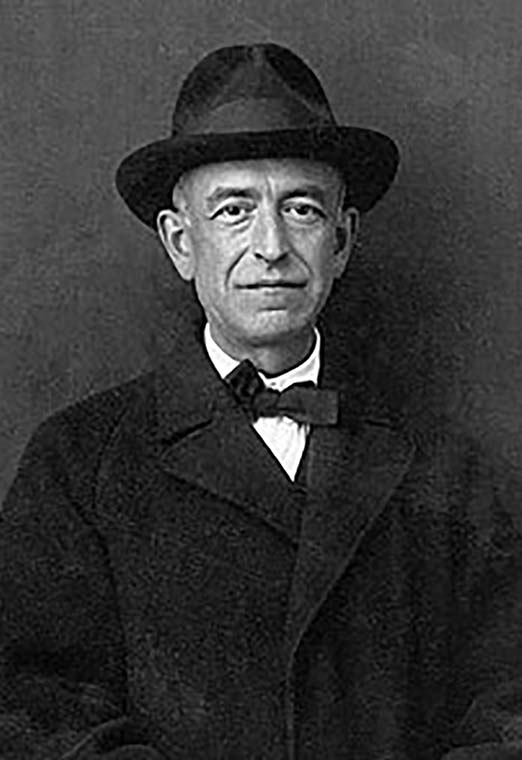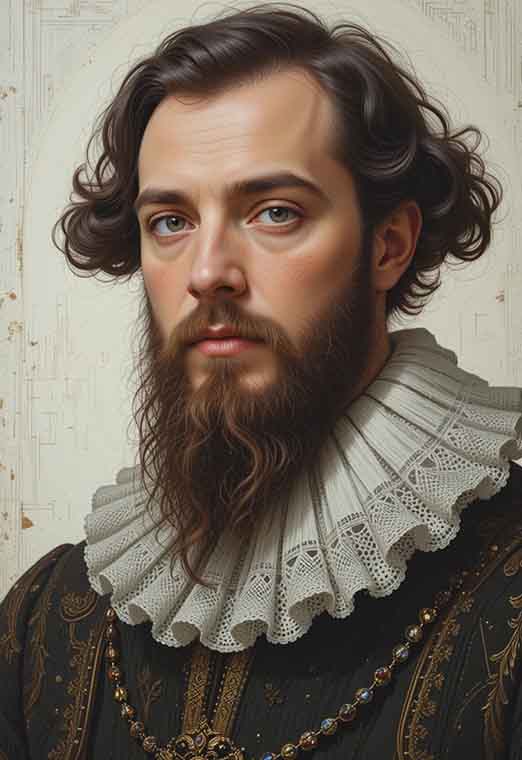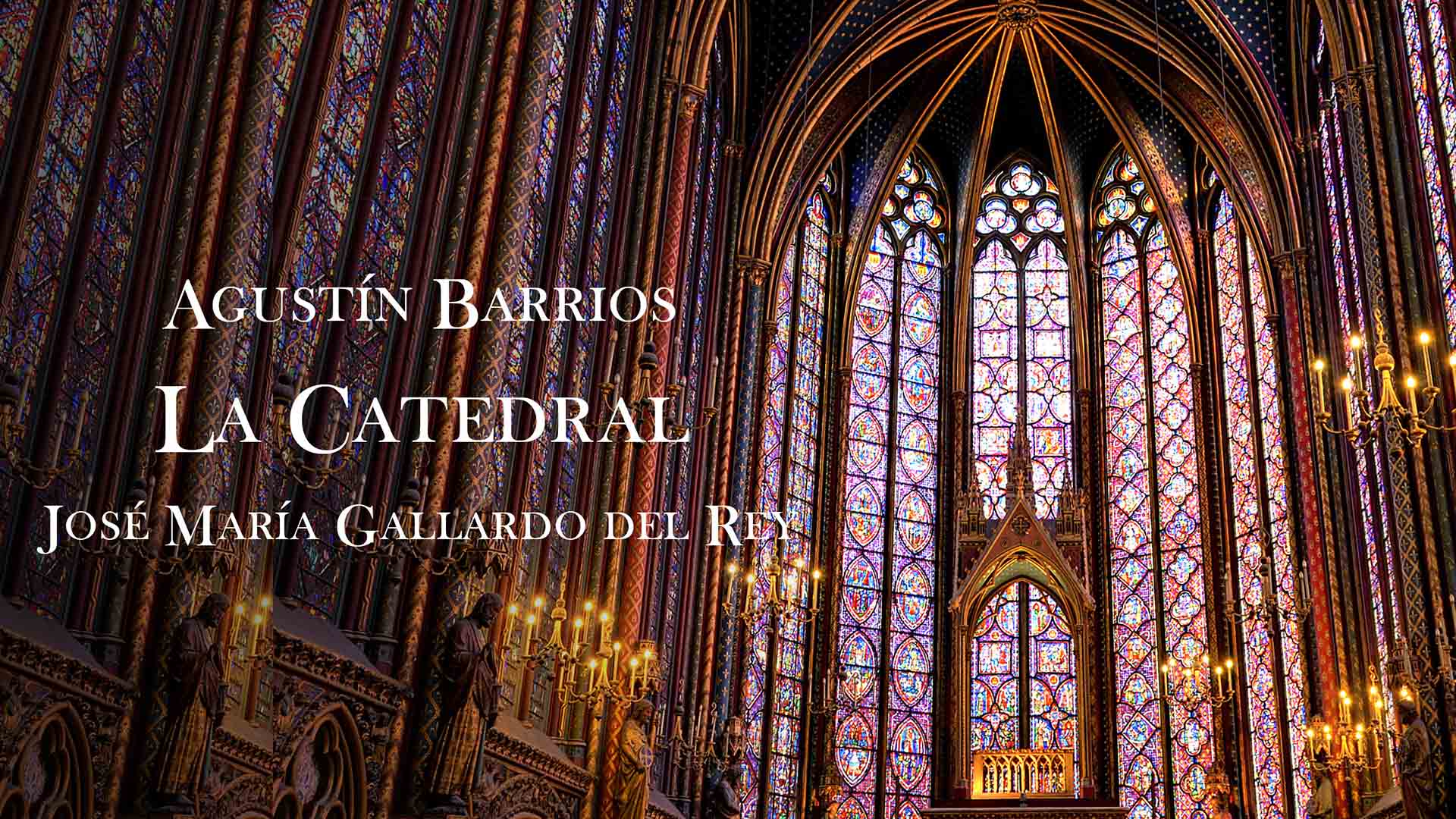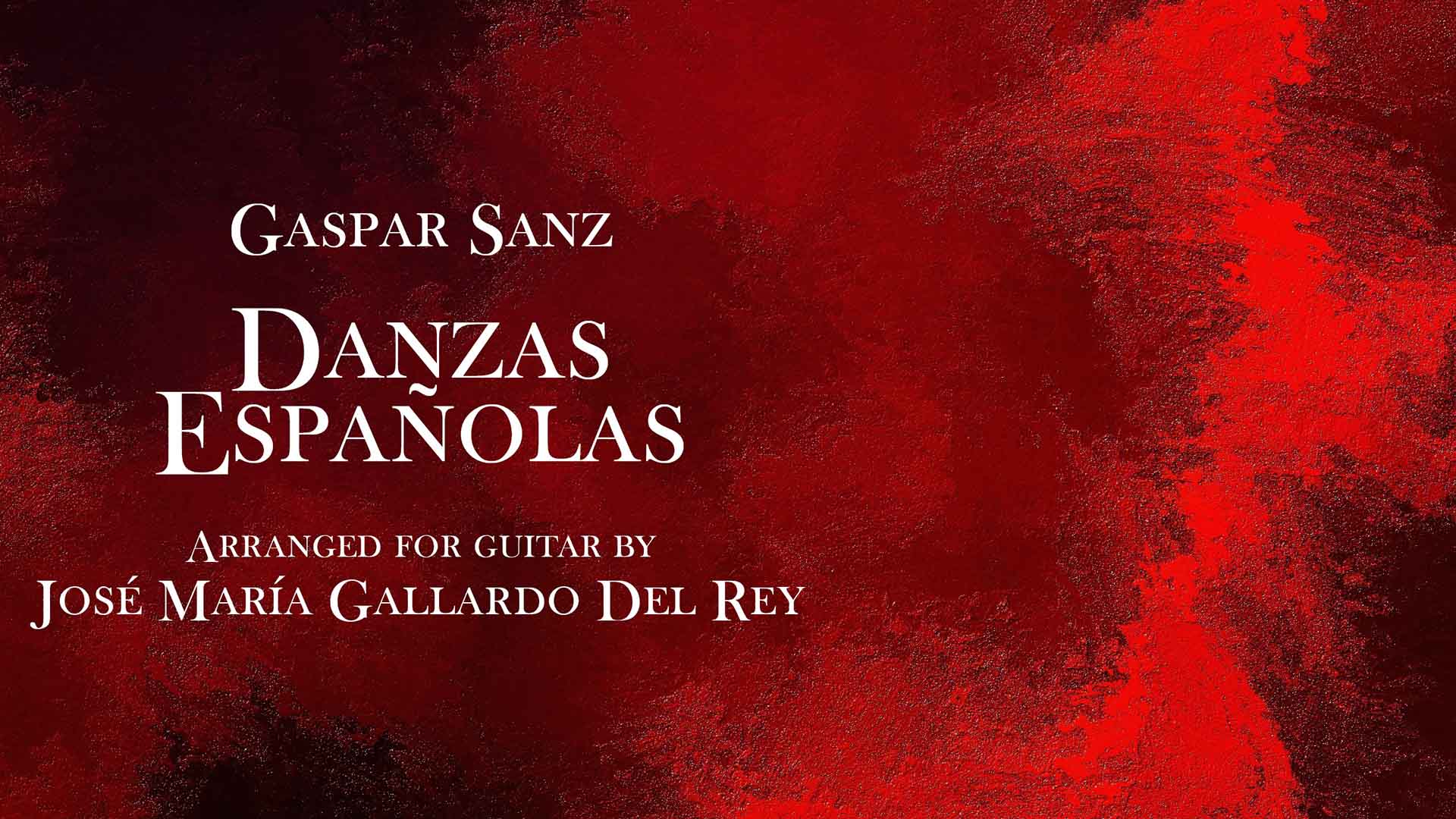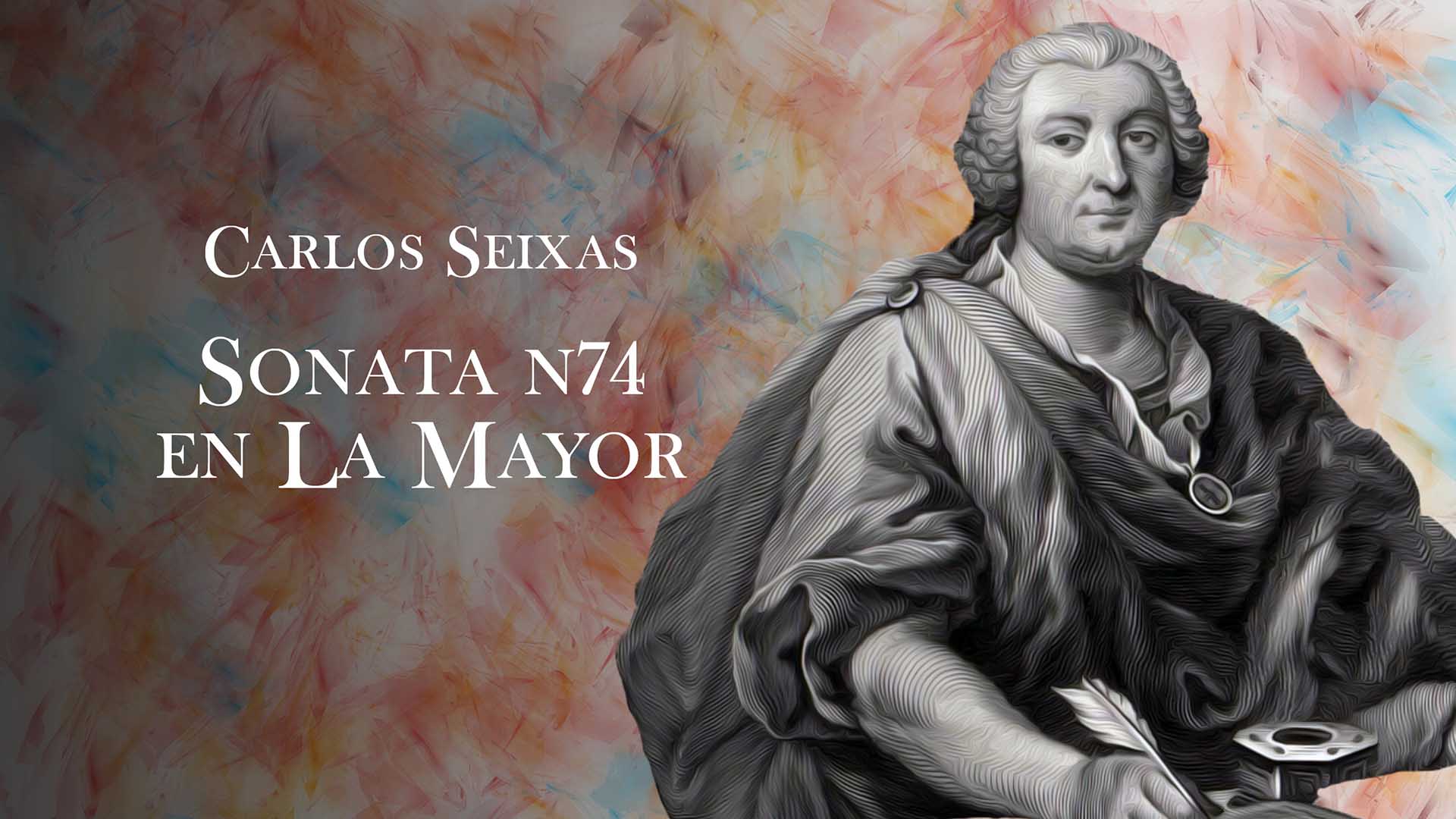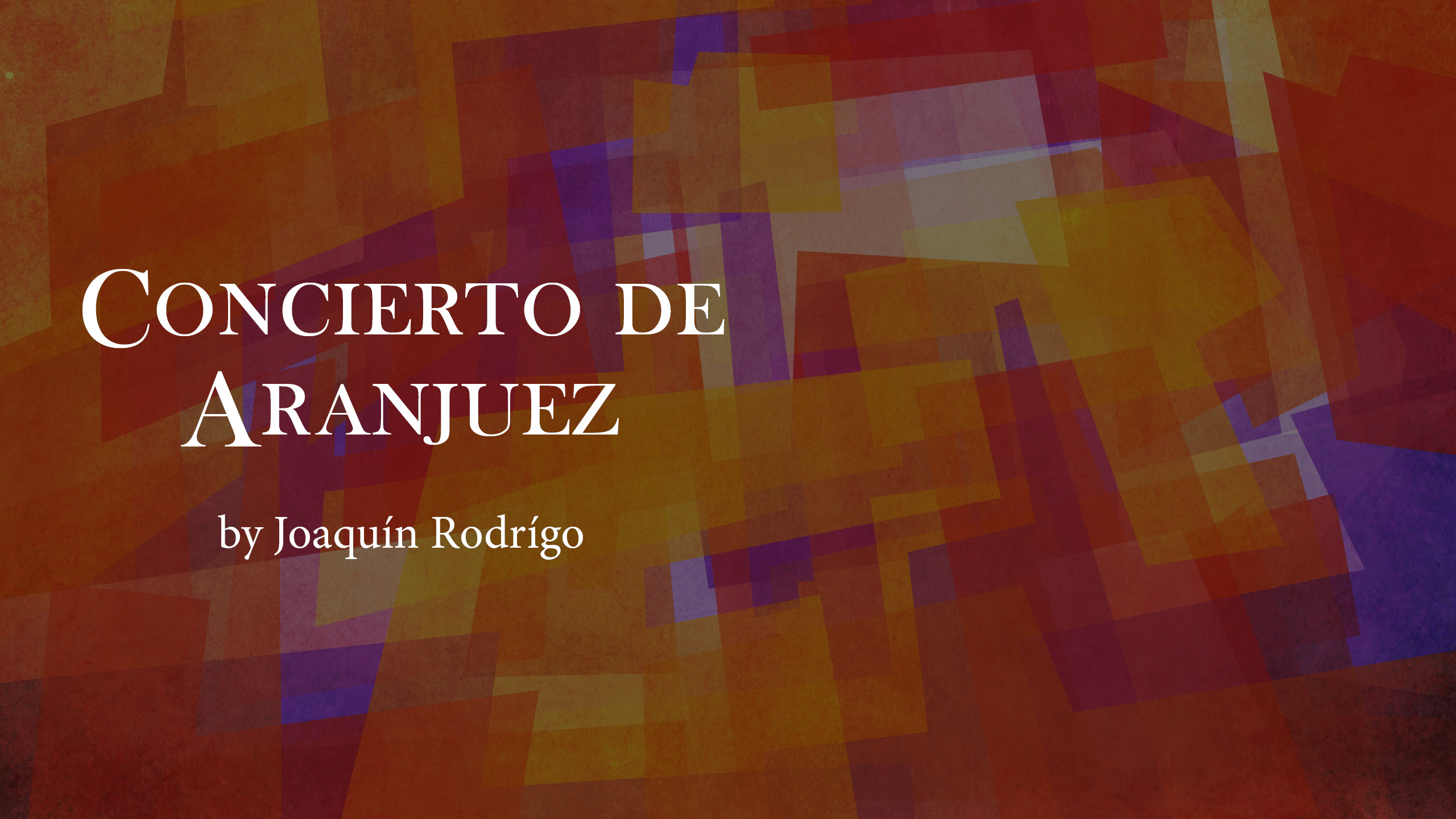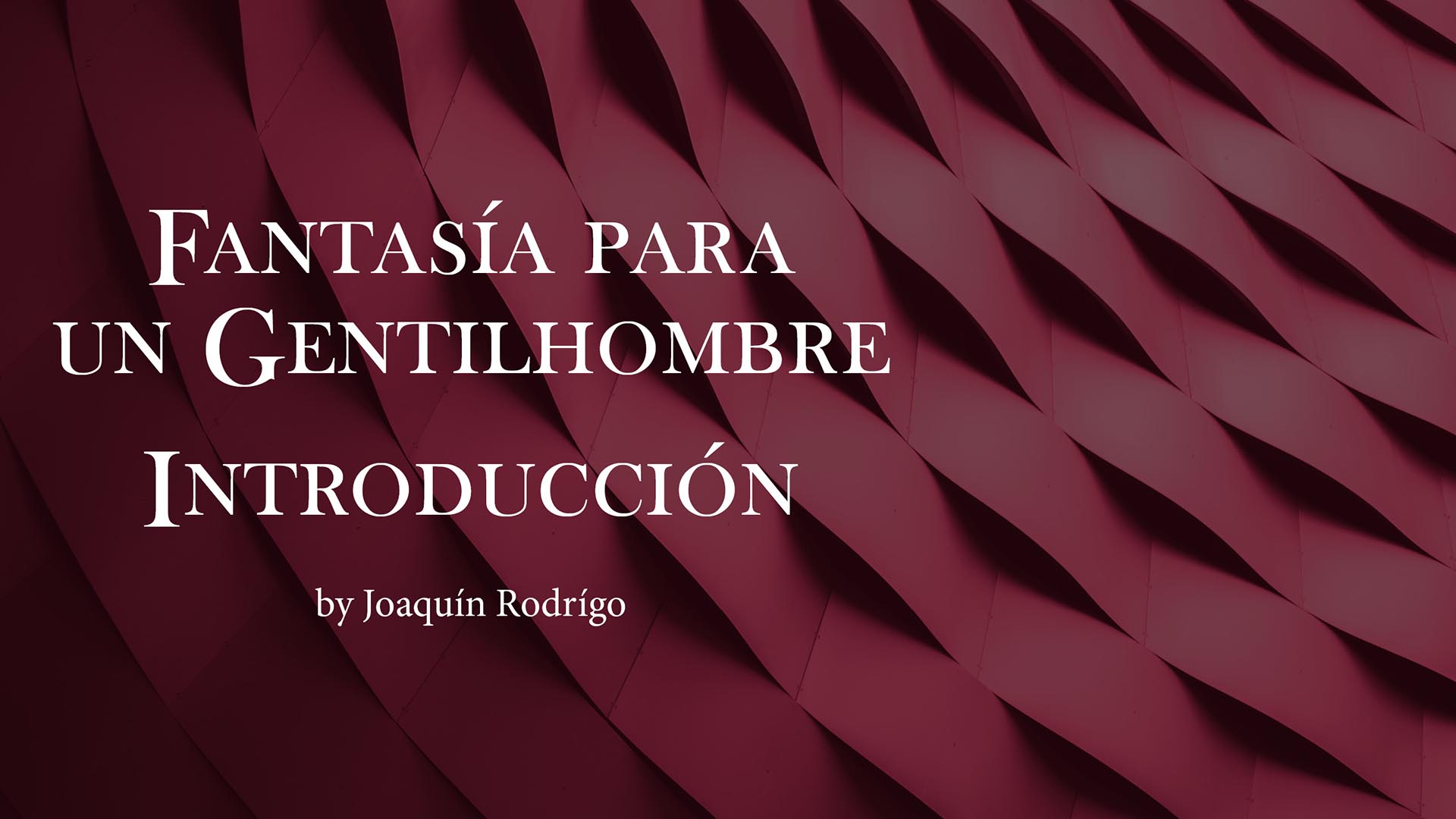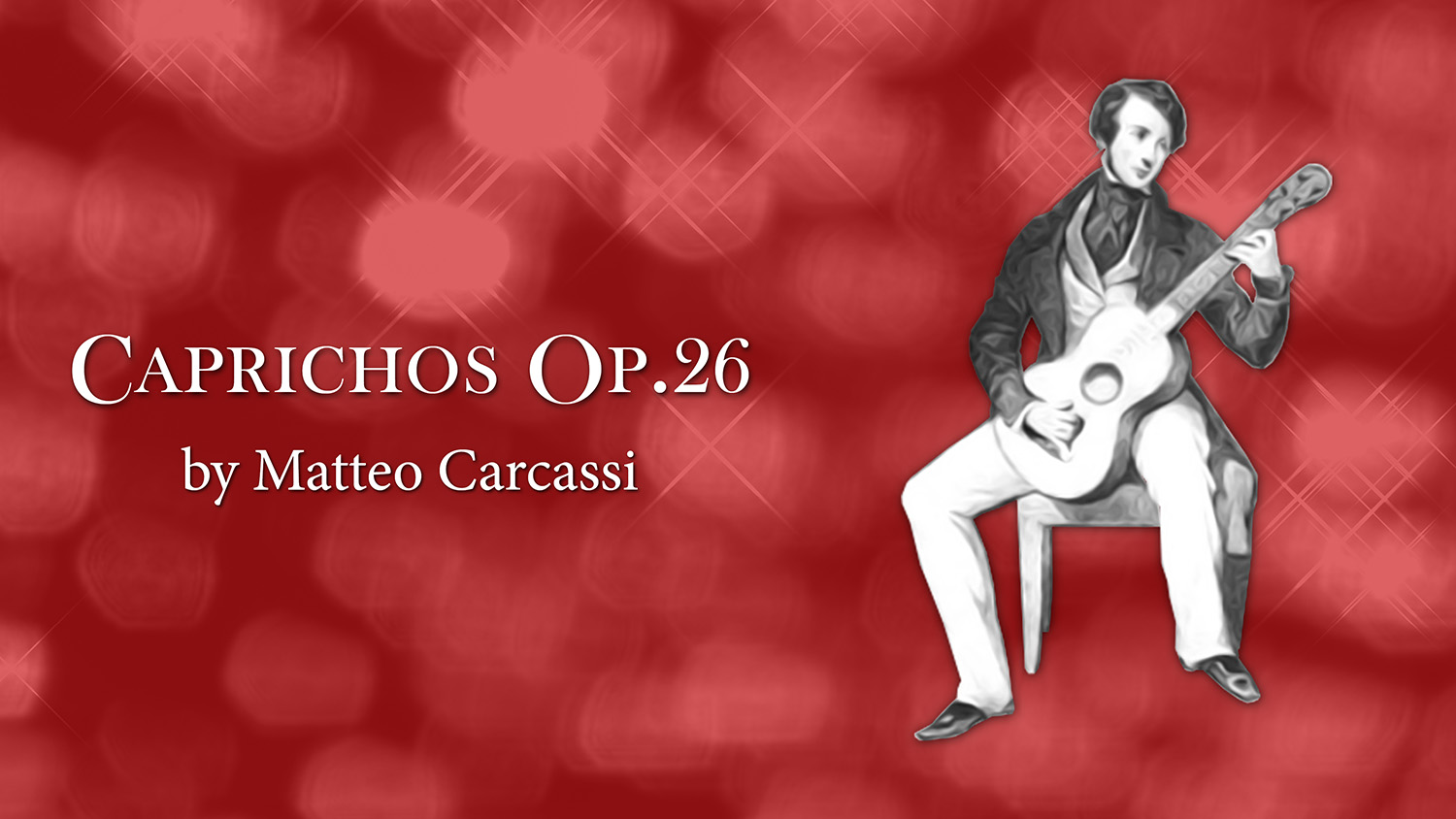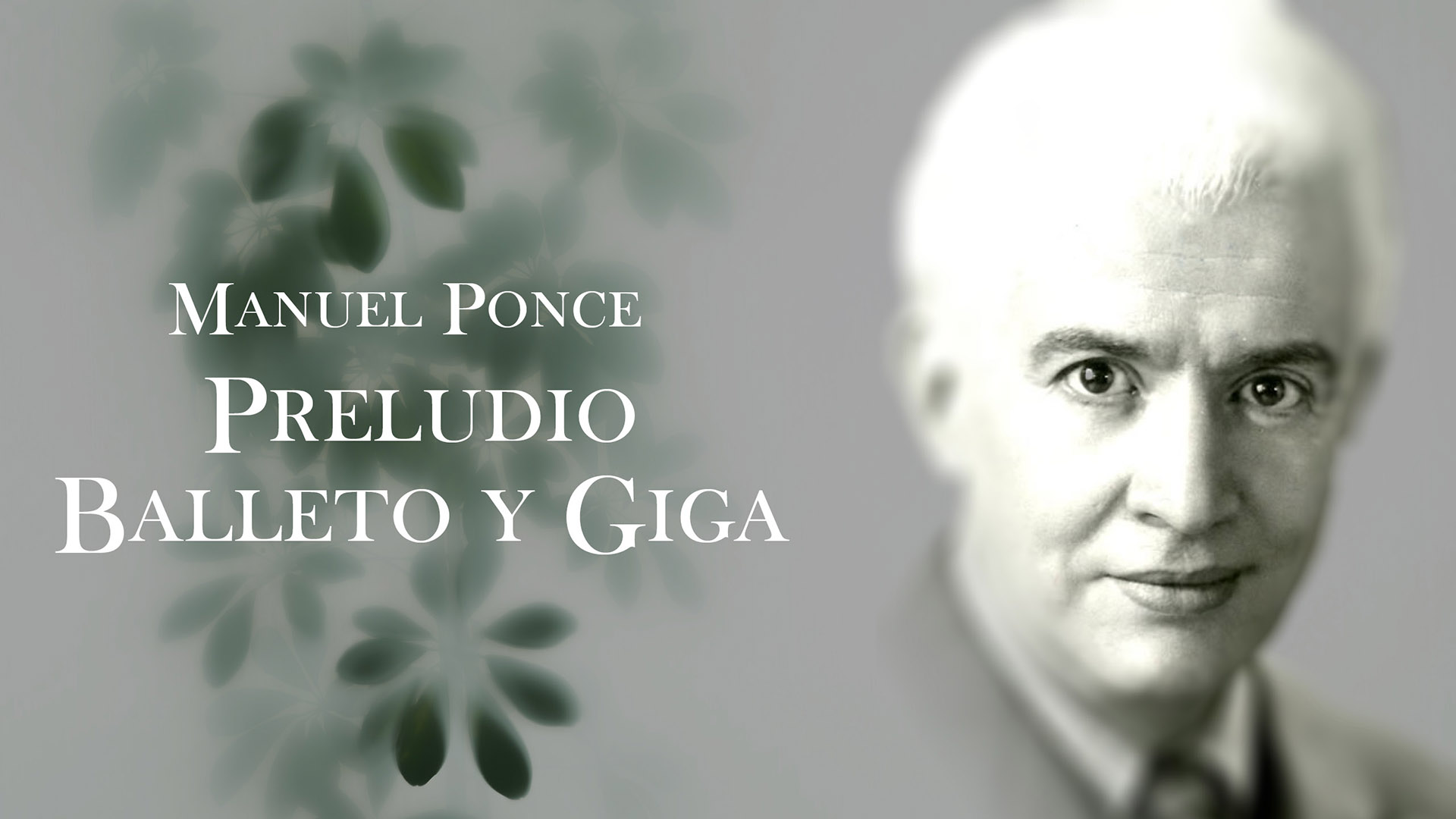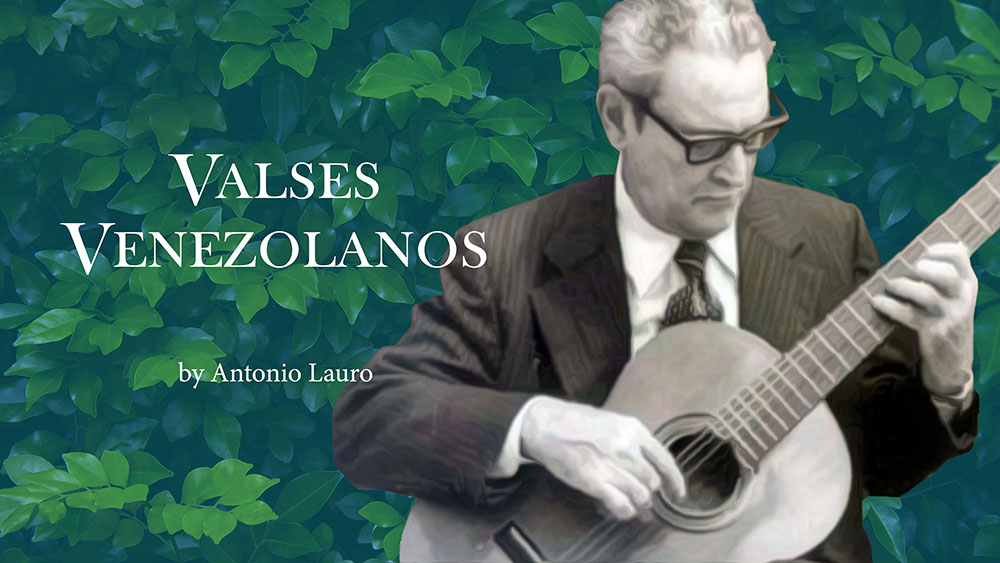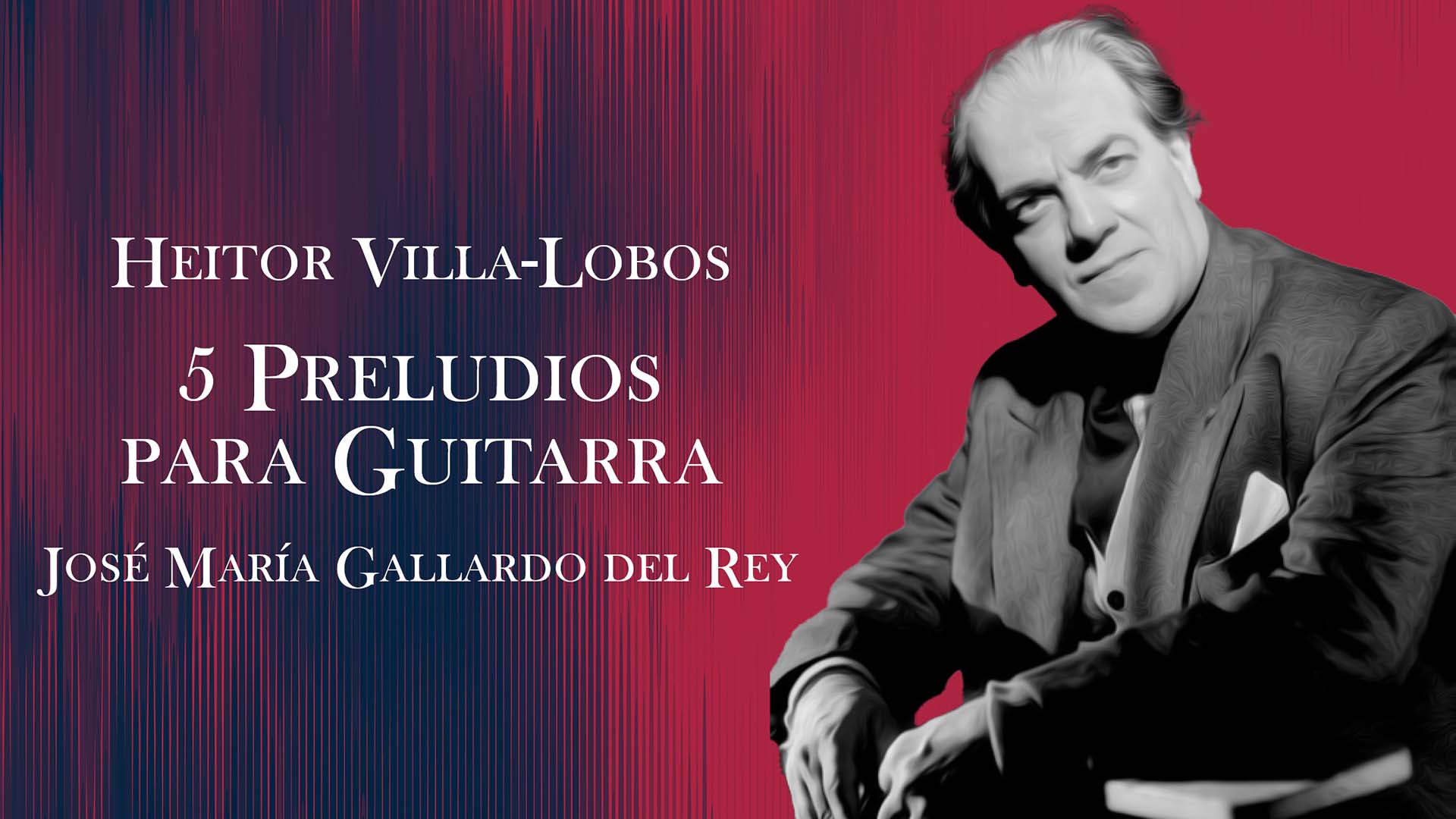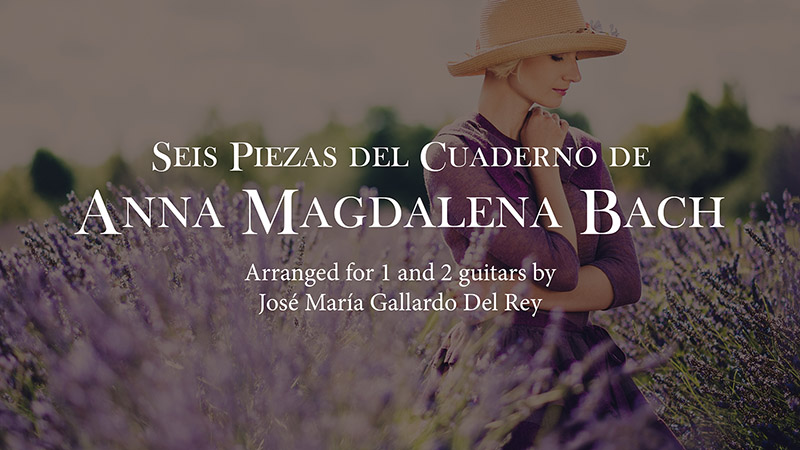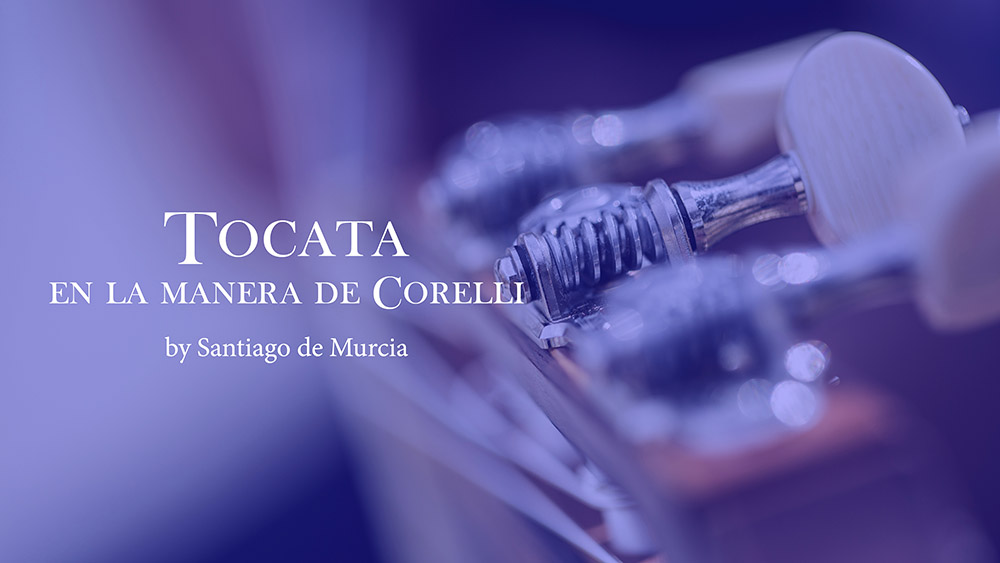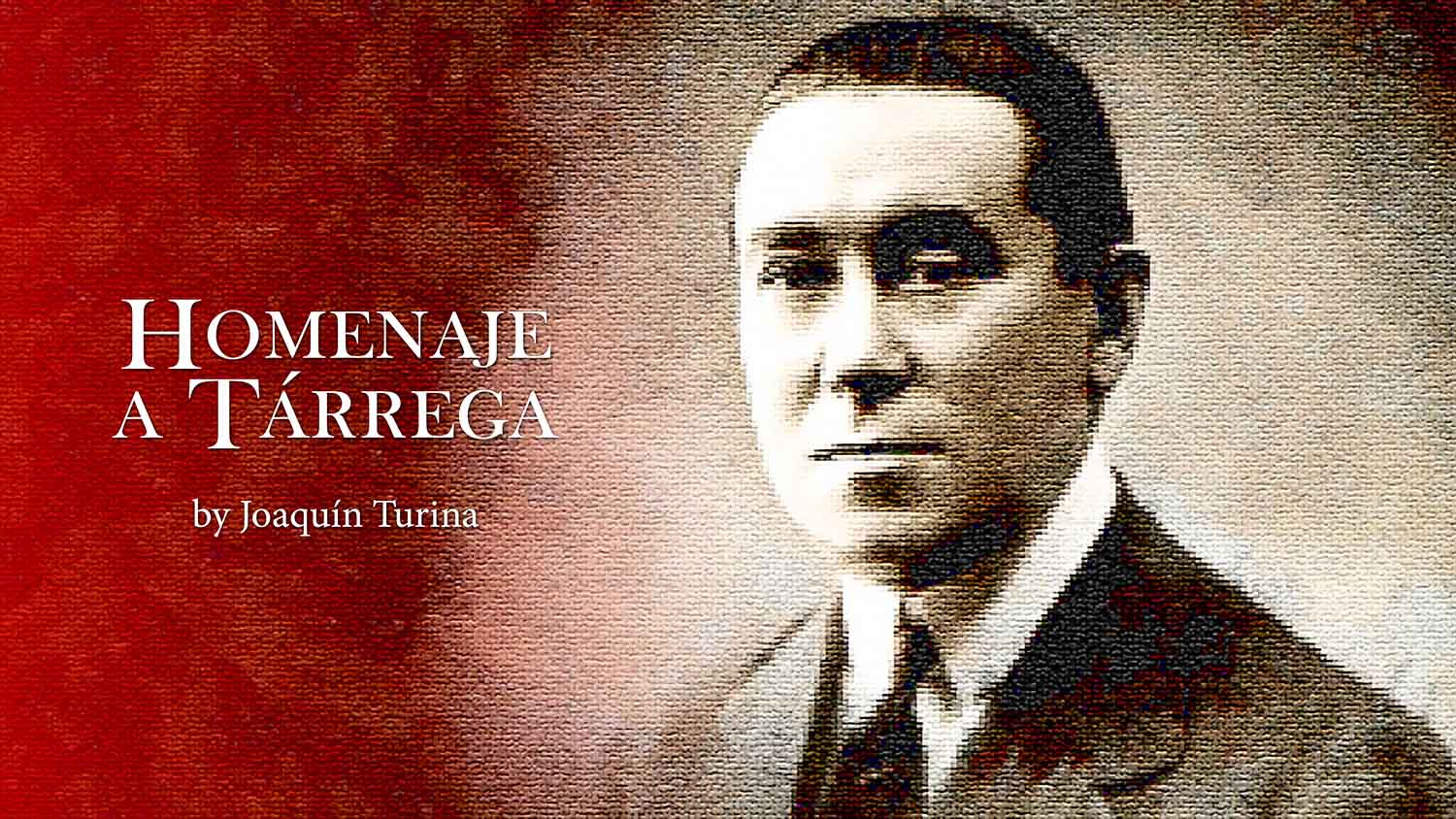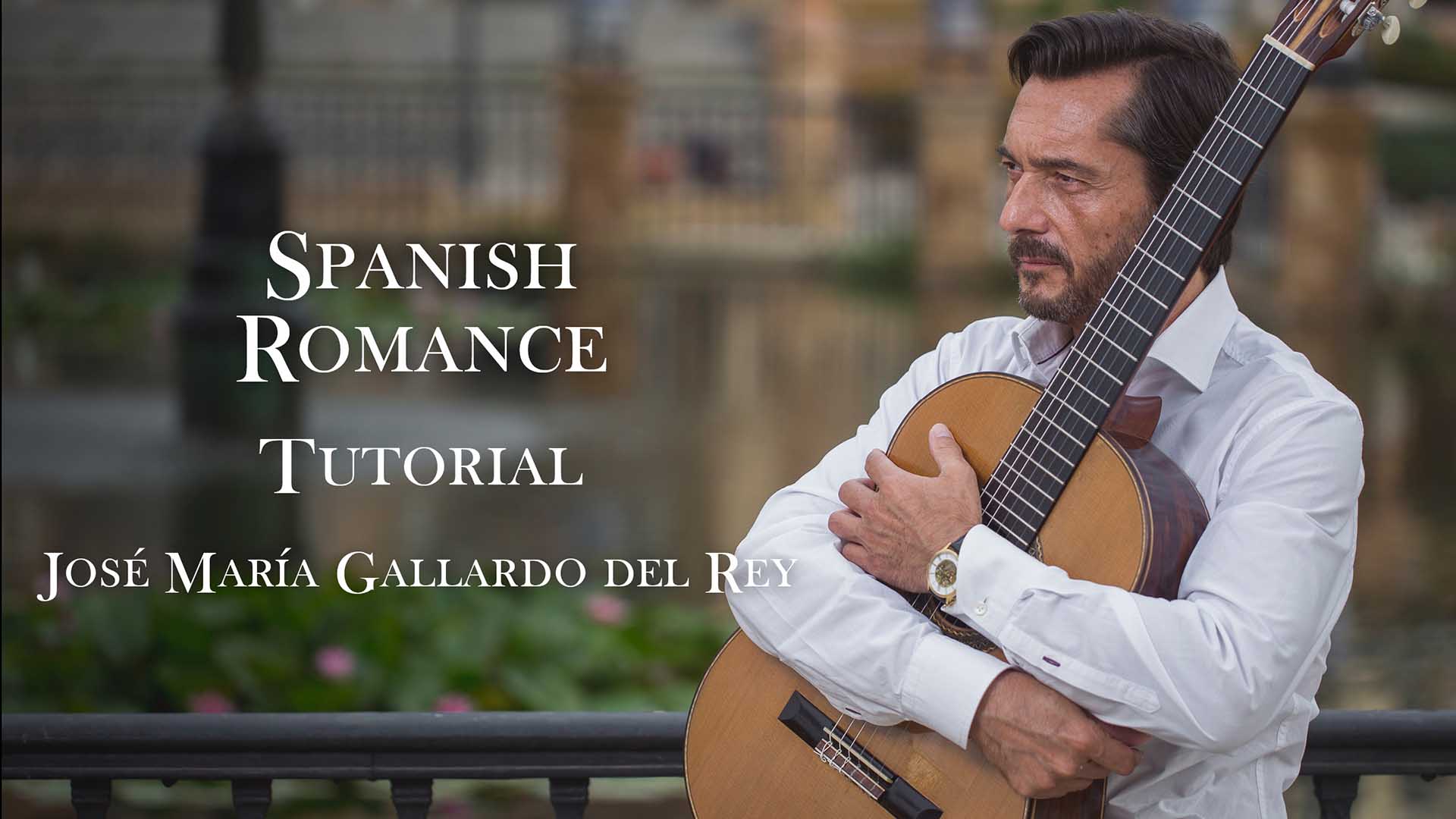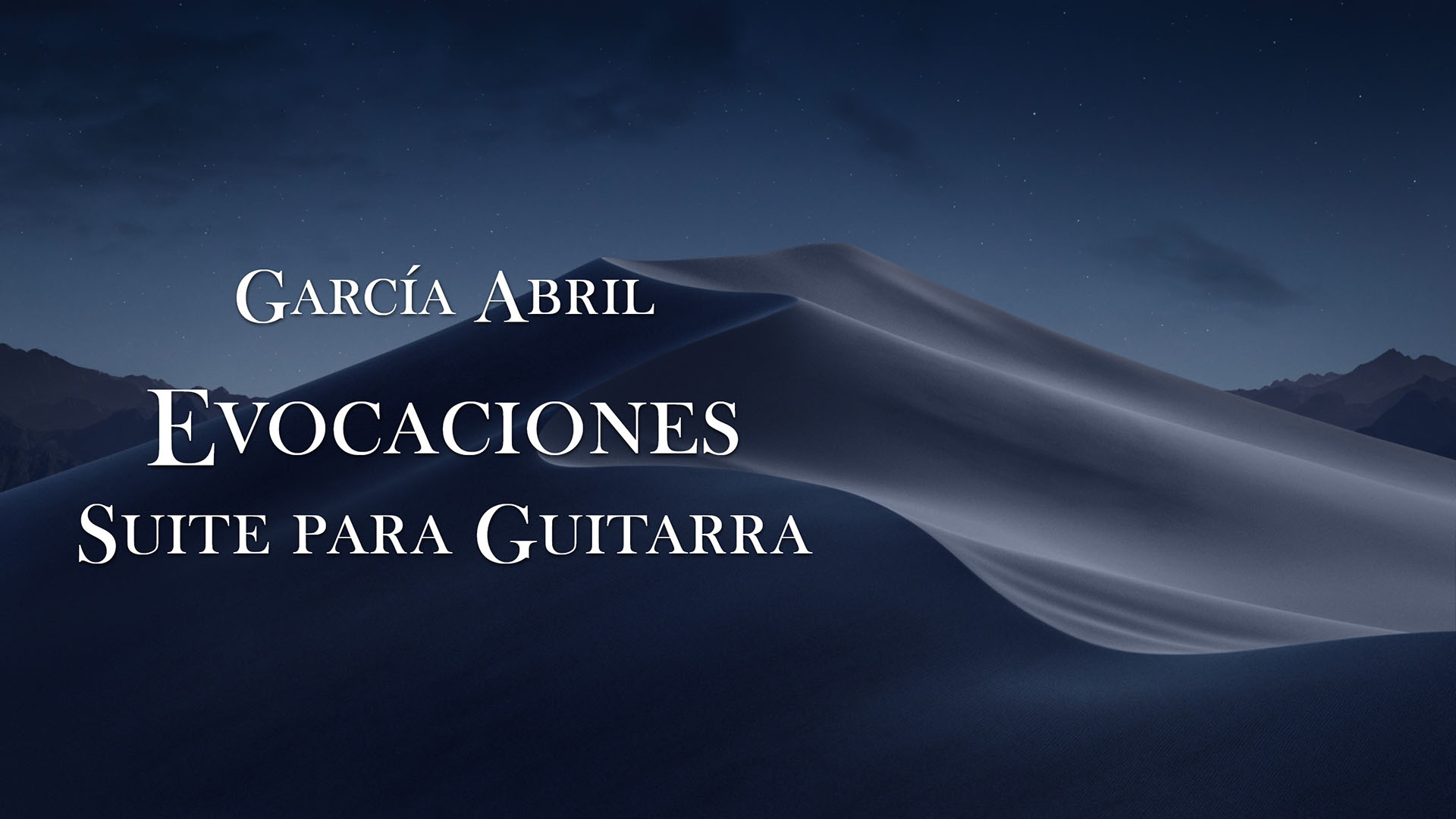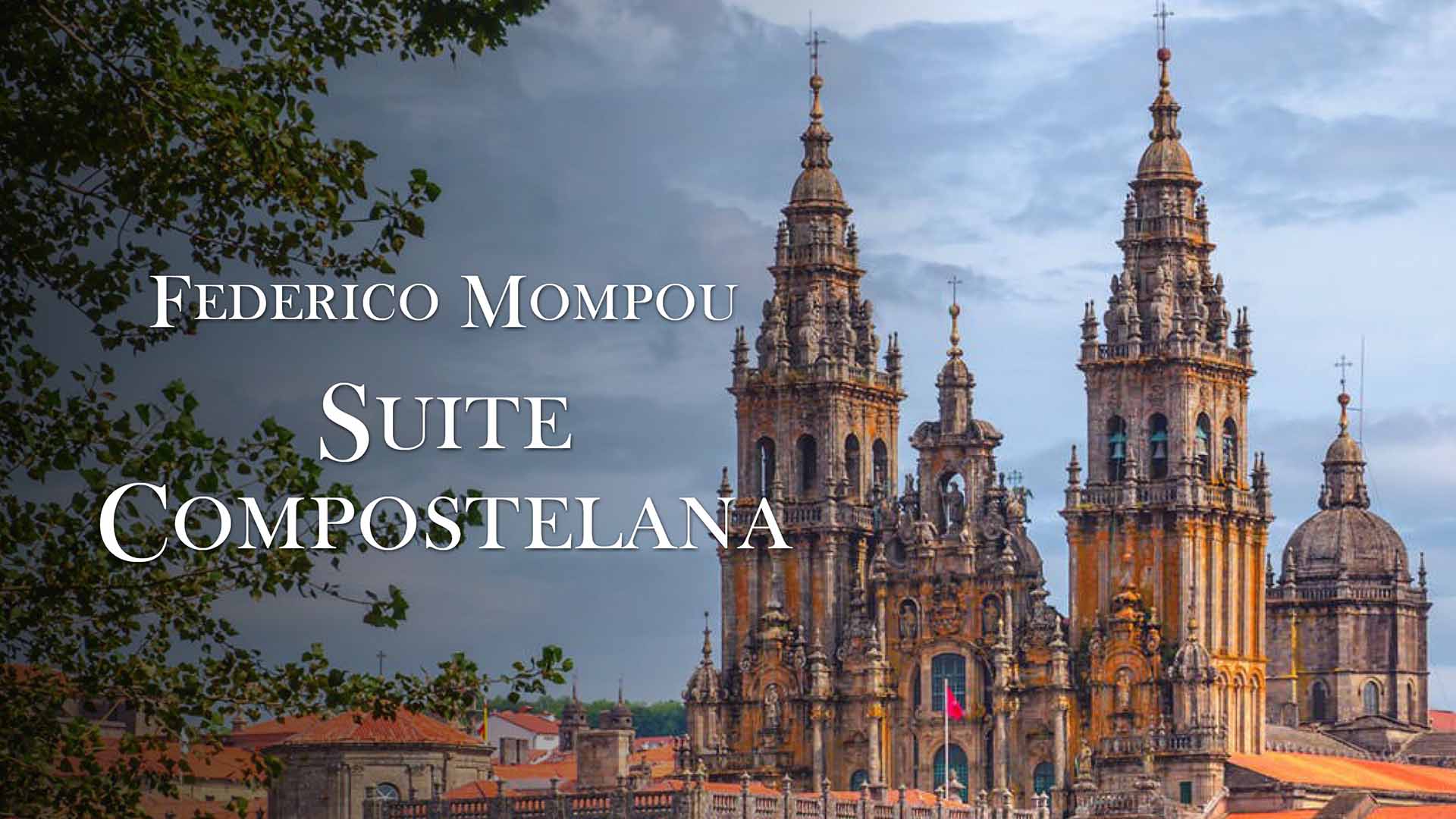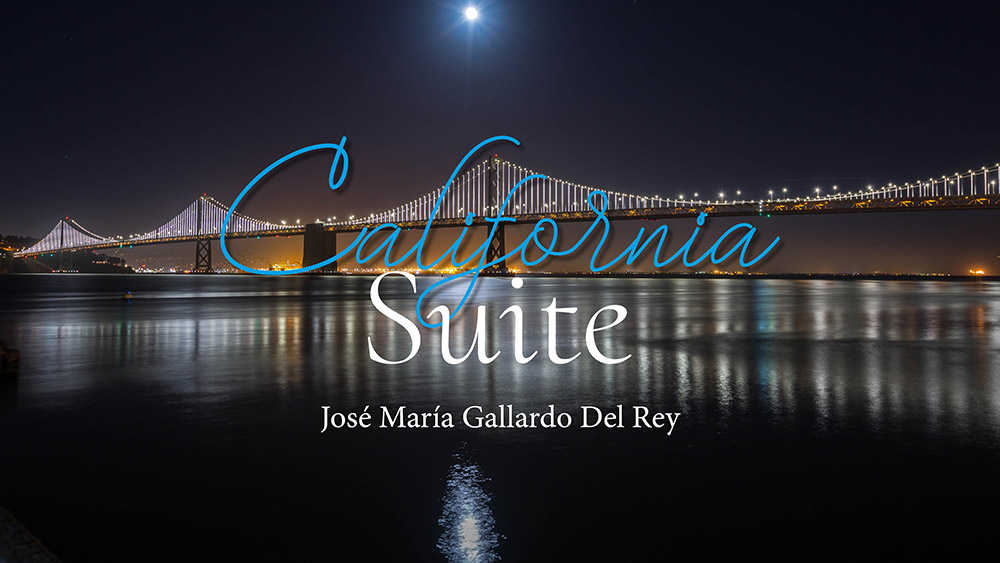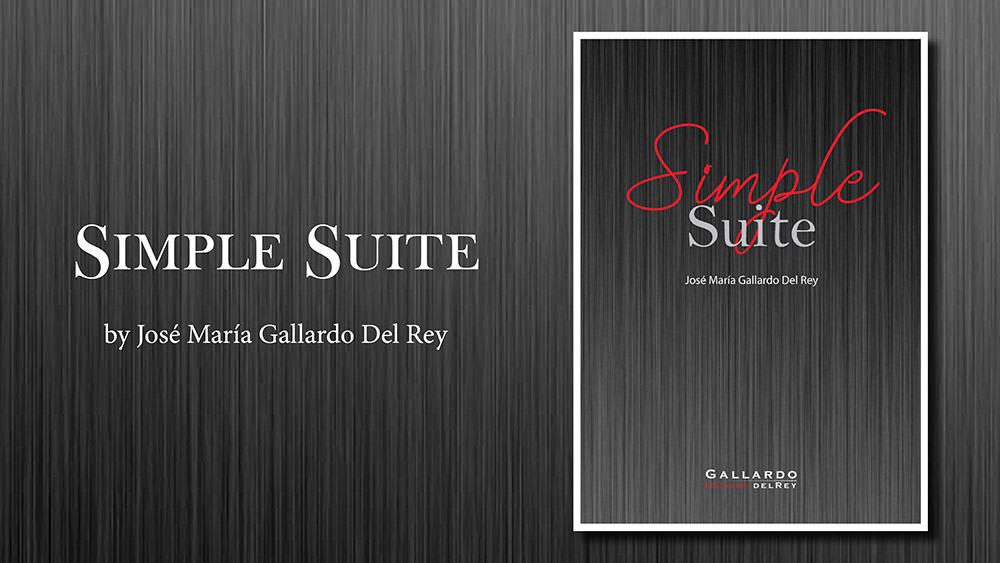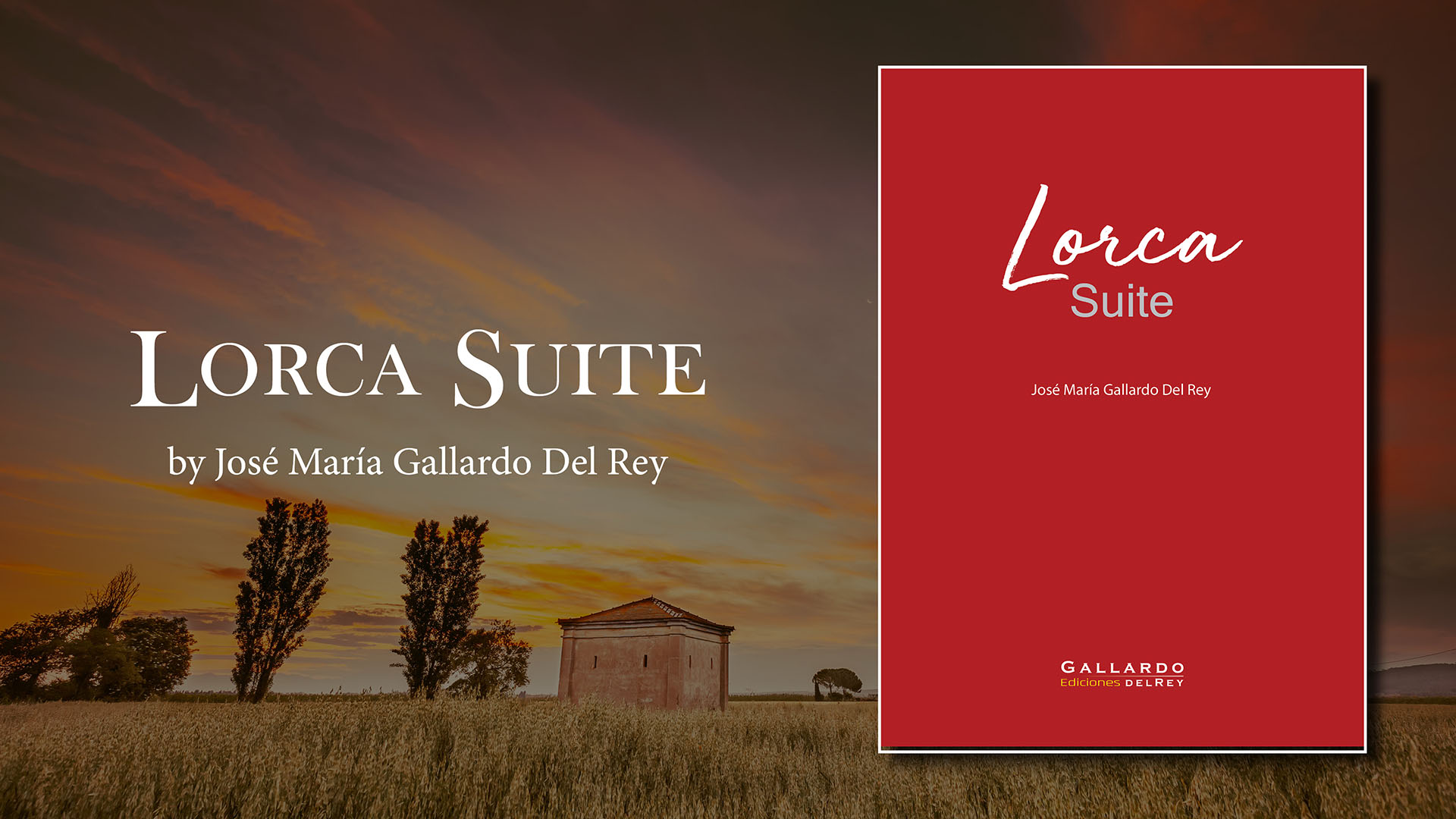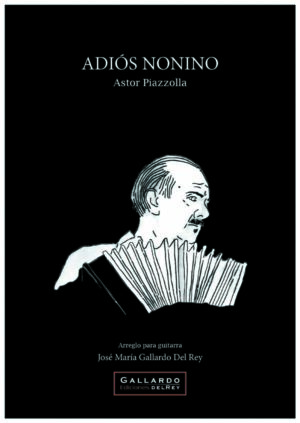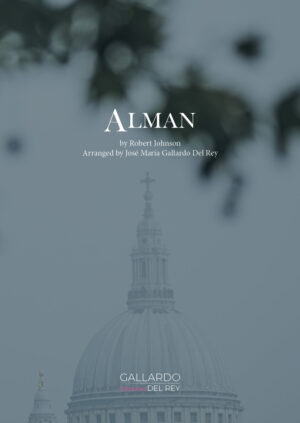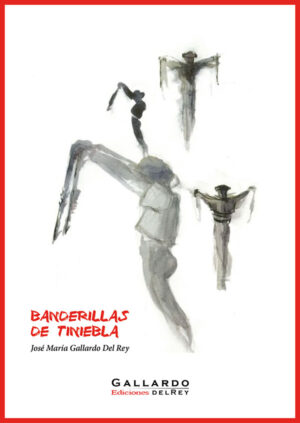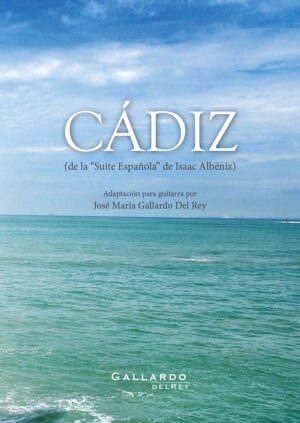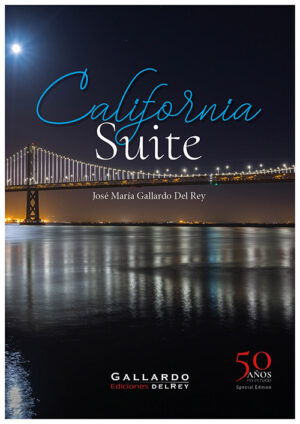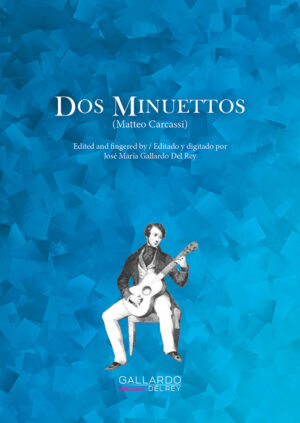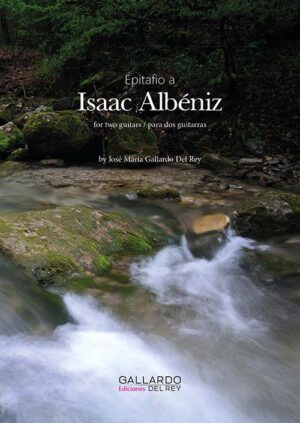Spanish Romance
The "Romance Anónimo," also known as "Spanish Romance" or "Jeux Interdits," is an iconic piece of the guitar repertoire, with its authorship remaining a topic of debate.
Simple Suite
Simple Suite is a collection of five pieces: Prelude, Siciliana, Pavane, Copla in the form of Habanera, and Giga. These pieces aim to guide the guitarist and musician through different sound colours, always from a level of accessibility for all.
Homenaje a Tárrega
"Homenaje a Tárrega" is a guitar piece composed in 1932 by Joaquín Turina (Seville, 1882 - Madrid, 1949) in honour of the great guitarist and composer Francisco Tárrega.
Valses Venezolanos – Antonio Lauro
The Venezuelan Waltzes by Antonio Lauro are a collection of pieces that capture the essence and spirit of traditional Venezuelan music. Composed in the first half of the 20th century, these works reflect Venezuela's rich cultural heritage, blending the elegance of European waltzes with indigenous rhythms and melodies.
Preludio en Mi Mayor – Manuel Ponce
Preludio en Mi Mayor is a notable work by the Mexican composer and guitarist Manuel Ponce, who is regarded as one of the most important exponents of classical guitar music in the 20th century.
Sonata n74 – Carlos Seixas
La Sonata n.º 74 is one of the numerous keyboard compositions by the Portuguese composer Carlos Seixas (Coimbra, 1704 - Lisbon, 1742).
Tocata a la manera de Corelli
The Toccata in the style of Corelli is a work by the Spanish composer and guitarist Santiago de Murcia (c. 1682 - c. 1739), included in his collection Passacalles y obras from 1732.
COMPOSERS

Cádiz – Isaac Albéniz
“Cádiz” is a piece originally composed for piano by Isaac Albéniz (Camprodón, 1860 – Cambo-les-Bains, 1909) in 1886, as part of his Suite Española Op. 47. Although titled “Saeta,” the piece does not directly reflect the style of Andalusian saetas, but rather presents a serenade that evokes the atmosphere of the city of Cádiz.
La Catedral
7mins : 24seg
Agustín Barrios
La Catedral, composed in 1921 by Agustín Barrios Mangoré (San Juan Bautista, 1885 – San Salvador, 1944), is a true masterpiece of the guitar repertoire. Inspired by both architecture and religious spirituality, it seamlessly fuses romantic and baroque techniques across three movements that require exceptional virtuosity and interpretative sensitivity.

La Catedral – Agustín Barrios
“La Catedral” is a cornerstone work by Paraguayan composer Agustín Barrios, born on May 5, 1885, and passed away on August 7, 1944. Composed in 1939, the piece is divided into three sections: Preludio, Andante, and Allegro, each with its own distinct character and atmosphere.

Chau París – Astor Piazzolla
“Chau París” is one of the most iconic compositions by the renowned Argentine composer and bandoneonist Astor Piazzolla, known for revolutionizing traditional tango and elevating it to new heights within classical and jazz music. Composed in 1980, this piece encapsulates the essence of Piazzolla’s unique style, blending the passion of tango with elements of contemporary music.

En Los Trigales – Joaquin Rodrigo
“En Los Trigales” is a work by Spanish composer Joaquín Rodrigo, born on November 22, 1901, and passed away on July 14, 1999. Composed in 1961, this piece is part of his collection Cuatro Piezas Españolas. Rodrigo, known for his ability to blend elements of Spanish folklore with classical techniques, presents in this piece a soundscape that evokes the tranquility and beauty of wheat fields.

Sons de Carillhões – Joaquim Pernambuco
“Sons de Carillhões” is a standout work by Brazilian composer Joaquim dos Santos Pernambuco, renowned for his contributions to both classical and popular music in Brazil. Composed in a context where the fusion of styles was essential, this piece reflects the country’s rich cultural heritage and musical diversity.

Choros n1 – Heitor Villa-Lobos
“Choros No. 1” is one of the most iconic works by Brazilian composer Heitor Villa-Lobos, who is considered one of the most important and prolific composers in Latin America. Composed in 1920, this piece is a remarkable example of the fusion between classical music and Brazil’s rich folk traditions, reflecting the cultural diversity of the country.
Danzas Españolas
9mins : 21seg
Gaspar Sanz
The Spanish Dances by Gaspar Sanz (Calanda, 1640 – Madrid, c.1710), composed around 1674, are integral to his method for the baroque guitar. These pieces blend popular Spanish rhythms with courtly refinement, showcasing a remarkable richness in both rhythm and harmony that is essential to the development of the Iberian guitar repertoire.

Secret Garden – Rolf Lovland
“Secret Garden” is a captivating work by Norwegian composer and pianist Rolf Løvland, known for his ability to blend classical elements with contemporary influences and evocative melodies. This piece, part of the repertoire of his musical duo Secret Garden, stands out for its lyricism and magical atmosphere, transporting the listener into a dreamlike world.

Variaciones sobre un tema de Mozart – Fernando Sor
“Variations on a Theme by Mozart” is a notable work by Spanish composer and guitarist Fernando Sor, who is considered one of the most important figures in classical guitar during the 19th century. Published in 1821, this piece is based on a theme from Wolfgang Amadeus Mozart’s famous opera The Abduction from the Seraglio, reflecting Sor’s admiration for the Austrian master and his talent for reinterpreting classical melodies.

Madroños – Francisco Torroba
“Madroños” is an iconic work by Spanish composer Francisco Torroba (1891–1982), a leading figure in 20th-century Spanish classical music. Composed in 1930, this piece reflects the rich folkloric tradition of Spain, blending evocative melodies with brilliant guitar technique.
Sonata n74
6mins : 20seg
Carlos Seixas
The Sonata No. 74 in A minor by Carlos Seixas (Coimbra, 1704 – Lisbon, 1742), composed between 1720 and 1742, exemplifies the transition from the baroque style to the galant. It comprises two movements: a virtuosic Allegro and an elegant, refined Minuet. Originally written for harpsichord or organ, its adaptation for the modern guitar facilitates the exploration of ornate textures and expressive contrasts, highlighting the melodic richness and structural clarity that are characteristic of 18th-century Portuguese style.

Secret Garden – Rolf Lovland
“Secret Garden” is a captivating work by Norwegian composer and pianist Rolf Løvland, known for his ability to blend classical elements with contemporary influences and evocative melodies. This piece, part of the repertoire of his musical duo Secret Garden, stands out for its lyricism and magical atmosphere, transporting the listener into a dreamlike world.

Variaciones sobre un tema de Mozart – Fernando Sor
“Variations on a Theme by Mozart” is a notable work by Spanish composer and guitarist Fernando Sor, who is considered one of the most important figures in classical guitar during the 19th century. Published in 1821, this piece is based on a theme from Wolfgang Amadeus Mozart’s famous opera The Abduction from the Seraglio, reflecting Sor’s admiration for the Austrian master and his talent for reinterpreting classical melodies.

Madroños – Francisco Torroba
“Madroños” is an iconic work by Spanish composer Francisco Torroba (1891–1982), a leading figure in 20th-century Spanish classical music. Composed in 1930, this piece reflects the rich folkloric tradition of Spain, blending evocative melodies with brilliant guitar technique.
Concierto de Aranjuez
21mins
Joaquín Rodrigo
The Concierto de Aranjuez, composed in 1939 by Joaquín Rodrigo (Sagunto, 1901 – Madrid, 1999), is the most renowned work in the concert repertoire for guitar. Divided into three movements, it is especially celebrated for its lyricism, particularly in the Adagio. The concerto artfully combines Spanish tradition with a neoclassical style, demanding exceptional expressiveness and technical mastery from the performer.
Concierto para un Gentilhombre
21mins
Joaquín Rodrigo
The Concierto para un gentilhombre, composed in 1954 by Joaquín Rodrigo (Sagunto, 1901 – Madrid, 1999), was written for Andrés Segovia. Inspired by dances from the Spanish baroque, its four movements elegantly reinterpret the style of Gaspar Sanz. This work demands not only virtuosity and clarity of articulation but also a refined sense of musicality from the performer.
Seis Caprichos Op. 26
Mateo Carcassi
The Seis Caprichos Op. 26 by Matteo Carcassi (Florence, 1796 – Paris, 1853), published around 1827, are essential pieces in the romantic guitar repertoire. Designed as musical studies, they blend technical skill with expressiveness, focusing on aspects such as arpeggios, scales, and articulations. Their inherent musicality makes them ideal for both technical development and artistic interpretation.
Preludio, Balletto y Giga en Mi Mayor
8mins : 15seg
Manuel Ponce
The Preludio, Balletto y Giga in E Major, composed in 1931 by Manuel M. Ponce (Fresnillo, 1882 – Mexico City, 1948), is a suite of three movements that pays homage to the baroque style. Influenced by his friendship with Andrés Segovia, Ponce skillfully recreates ancient forms while employing modern harmonic language. The *Preludio* showcases arpeggiated and lyrical writing; the *Balletto* evokes courtly dances with an elegant rhythm; and the *Giga* concludes with vivacity and precise articulation. This work requires both technical control and a deep understanding of style, making it ideal for guitarists who wish to explore the fusion of tradition and modernity.
Valses Venezolanos
Antonio Lauro
The Valses Venezolanos by Antonio Lauro (Ciudad Bolívar, 1917 – Caracas, 1986), composed between 1940 and 1960, are essential works in the Latin American guitar repertoire. They blend lyricism and Venezuelan popular rhythms with classical writing, renowned for their melodic elegance and harmonic richness. These pieces demand sensitivity and a refined sense of rubato from the performer.
Five Preludes
Heitor Villa-Lobos
The Cinco Preludios by Heitor Villa-Lobos (Rio de Janeiro, 1887 – 1959), composed in 1940, explore the essence of the Brazilian soul through the guitar. Each piece evokes a distinct character, blending lyricism, popular elements, and advanced techniques. These works are fundamental to the modern repertoire because of their expressiveness and structural complexity.
Six Pieces for Anna Magdalena Bach
J. S. Bach
The Six Pieces for Anna Magdalena Bach, compiled in 1725 by J.S. Bach (Eisenach, 1685 – Leipzig, 1750), adapt baroque dances originally composed for keyboard. These guitar arrangements offer melodic clarity and harmonic richness, making them ideal for developing technique and expression within the intimate and domestic baroque style.
Tocata in the Style of Corelli
8mins : 30seg
Santiago de Murcia
The Tocata in the Style of Corelli by Santiago de Murcia (Madrid, 1673 – Madrid, 1739), composed around 1732, adapts passages from sonatas by Arcangelo Corelli. It blends the Italian style with techniques from the Spanish baroque guitar, alternating between plucking and strumming. This piece is crucial for exploring ornamentation and counterpoint in baroque guitar music.
Homenaje a Tárrega
8mins : 30seg
Joaquín Turina
Homenaje a Tárrega, composed in 1932 by Joaquín Turina (Seville, 1882 – Madrid, 1949), is an evocative piece for guitar that pays tribute to the Valencian master. It blends Andalusian lyricism with impressionistic language, requiring expressive subtlety and mastery of the distinctive tonal colour typical of 20th-century Spanish repertoire.
Spanish Romance
2mins : 43seg
José María Gallardo del Rey
The “Romance Anónimo,” also known as “Spanish Romance” or “Jeux Interdits,” is an iconic piece of the guitar repertoire, with its authorship remaining a topic of debate. Although it has been attributed to composers such as Antonio Rubira, Fernando Sor, and Narciso Yepes, there are recordings predating 1900 that suggest its origins in the 19th century. In his new version, José María Gallardo del Rey delivers a refined interpretation, highlighting its expressive sensitivity and artistic depth. This adaptation offers a renewed perspective on the piece, enriching its legacy in Spanish guitar.
Evocaciones
García Abril
Evocaciones, composed in 1981 by Antón García Abril (Teruel, 1933 – Madrid, 2021), is a suite of five pieces that explore the poetic expressiveness of the guitar. Featuring evocative titles and contemporary language, the work requires interpretative sensitivity and mastery of tonal colour.
Suite Compostelana
Federico Mompou
The Suite Compostelana, composed in 1962 by Federico Mompou (Barcelona, 1893 – 1987), is an intimate work dedicated to Andrés Segovia. Its six movements, characterised by a neoclassical and spiritual style, evoke the atmosphere of Santiago de Compostela. The piece requires technical refinement and expressive depth, conveyed through a sober and contemplative language.
GALLARDO DEL REY´S COMPOSITIONS
California Suite
Gallardo del Rey
““California Suite” was my first work. It was from this piece that I officially debuted as a composer. It was a graduation gift from my “brother” Joseph Mastroianni, who came to Spain from California to study guitar. The piece clearly reflects influences from Bach, Rachmaninoff, and Broadway-style music.”
Simple Suite
Gallardo del Rey
Simple Suite is a collection of five pieces: Prelude, Siciliana, Pavane, Copla in the form of Habanera, and Giga. These pieces aim to guide the guitarist and musician through different sound colours, always from a level of accessibility for all.
Lorca Suite
Gallardo del Rey
Lorca Suite is my personal recreation of the popular songs that Lorca collected and published. In this work, I highlight the technical and expressive aspects of what I understand as the Spanish Guitar.


